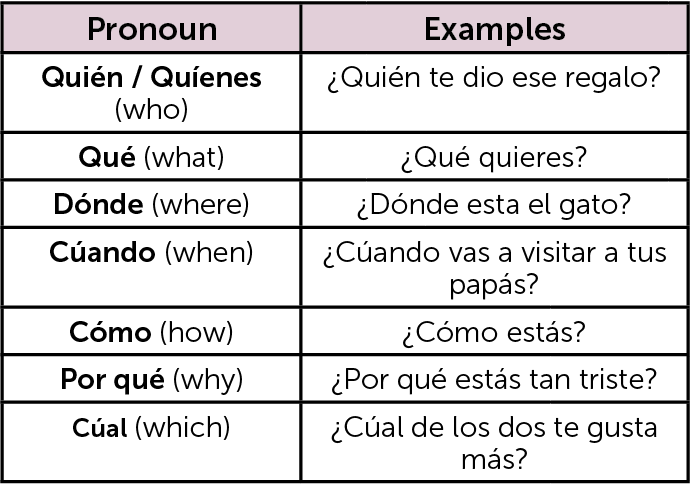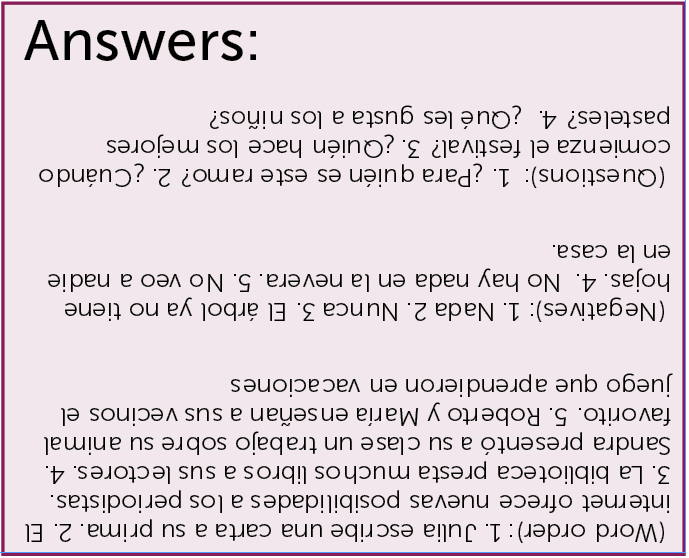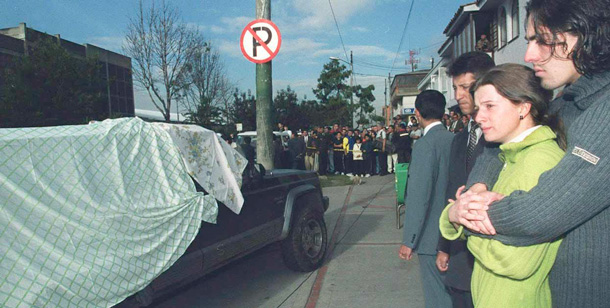
Need to work on your basic Spanish sentence structures? Keep reading to find out more.
We’ve got the building blocks you need to help you with your basic Spanish sentence structures so you can form affirmative, negative and basic questions whenever you need.
Building basic Spanish sentence structures in is actually quite simple, and helped by the fact that neither negative nor interrogative forms require much modification to the overall structure.
Affirmative sentences
The core elements of any sentence involve a subject and an event, or the predicate (verb + object). The predicate is composed of the verb and its direct object which is the recipient of the action. Sentences can then easily be built up in complexity using adjectives, adverbs and any other number of lexical resources. These elements all serve to show additional information regarding either the subject or the predicate.
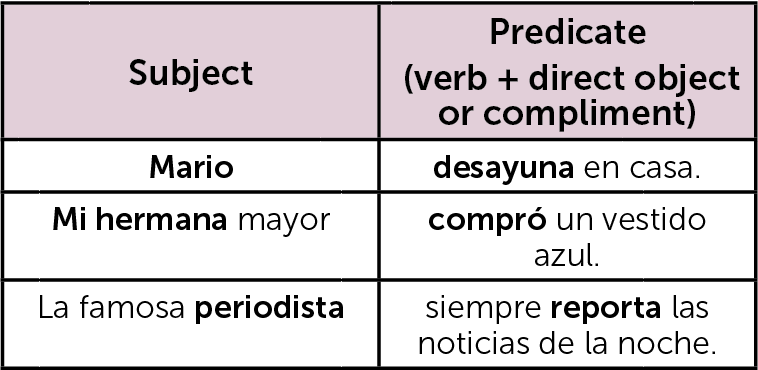
If the sentence includes both a direct object receiving the action, and an indirect object (which is affected by the action of the verb but not the primary object), then the direct complement should go before the indirect complement.
However, if the direct complement has additional information, then the order is reversed.
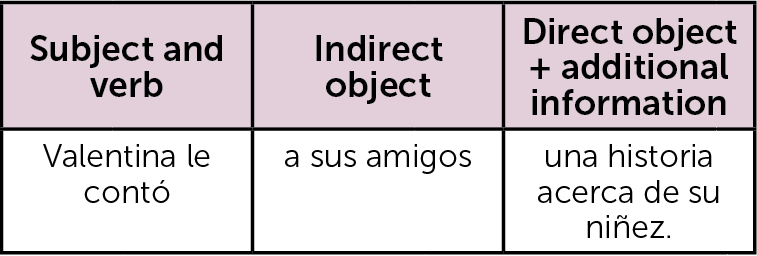
Check your understanding by arranging the following words to make a sentence. Remember that, in general, the direct object goes before the indirect object.
1. a su prima/escribe/Julia/una carta
2. el internet /a los periodistas/ofrece/nuevas posibilidades
3. muchos libros/presta/a sus lectores/la biblioteca
4. un trabajo/a su clase/Sandra presentó/sobre su animal favorito
5. el juego/a sus vecinos/enseñan/Roberto y Maria/que aprendieron en vacaciones
Negative sentences
Unlike English, which requires a relatively complex negative structure, sentences in Spanish are turned into negatives by the simple addition of the word “no” in front of the verb.
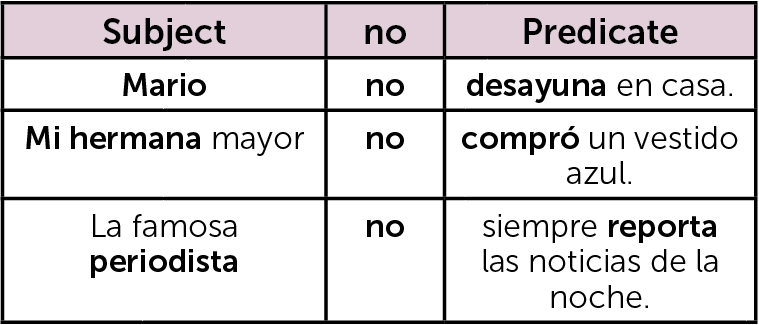
The use of double negatives is required with words such as nobody or nothing – nadie, nada. See the table for some more examples on how to use common negative words.
• No veo a nadie en el salón
• No quiero nada de comer, no tengo hambre.
• No conozco a ningún piloto.
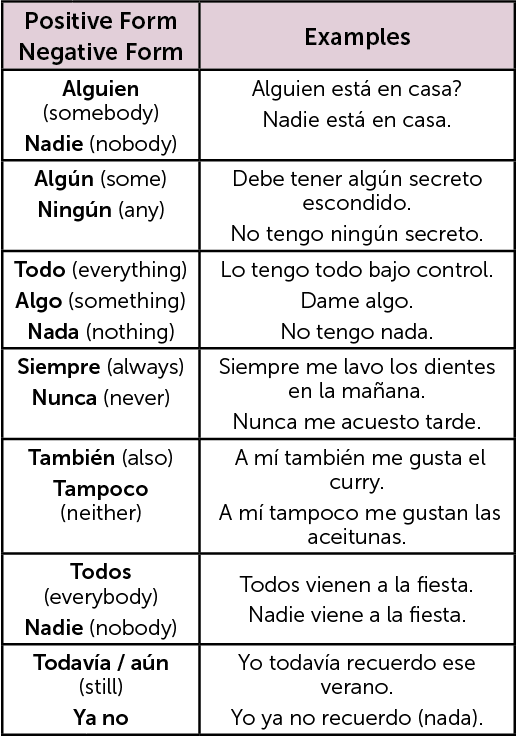
Check your understanding:
Choose the correct word to complete each sentence.
1. Hablas demasiado rápido, no comprendo nada / nadie / ningún
2. Silvia no había visto ningún / nunca / nadie el mar.
Change the following sentences into the negative form.
3. El árbol todavía tiene hojas.
4. Hay algo en la nevera.
5. Veo a alguien en la casa.
Interrogative sentences
Two concepts should be highlighted as we explore question forms in Spanish.
1. ¿Mario desayuna en casa?
2. ¿Mi hermana compró un vestido nuevo?
3. ¿La periodista siempre reporta las noticias de la noche?
One, is that the inverted interrogation mark (¿) is used to open the question. The second thing is that… well, nothing really changes in terms of structure. This is always the case for yes or no questions (preguntas totales), which are only distinguished by using a rising intonation towards the end of the question.
“Wh-” questions, or preguntas parciales, require a question word, or pronoun, which is placed at the beginning of the sentence.
• ¿Qué quieres de comer?
• ¿Cúanto vale la entrada?
• ¿Quién es tu amiga?
When the pronoun takes the place of the subject, the sentence structure does not need to be modified (quién or qué questions). However, with other question words, the predicate and the subject interchange places.
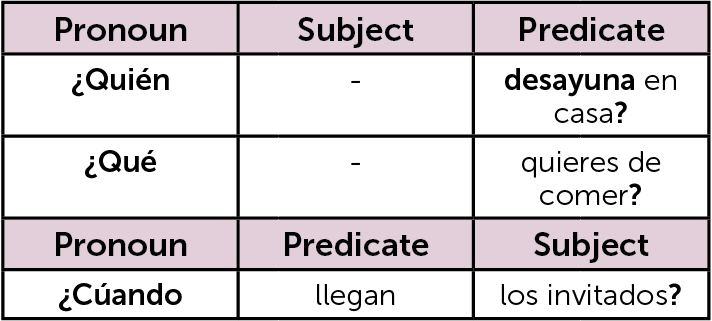
Ask a question about the underlined portion of the sentence:
Example: Entrenan en el patio. Answer: ¿Dónde entrenan?
1. Este ramo es para mamá.
2. El festival comienza mañana.
3. El pastelero de mi barrio hace los mejores pasteles.
4. A los niños les gustan los animales.
